Last Chance to Catch NYC's Holiday Notalgia Train
We met the voices of the NYC subway on our nostalgia ride this weekend!


The recent renovations at Penn Station have led to many parts of the station being boarded up, but at the same time, many parts of the original 1910 building have been uncovered. One exciting piece of the station to be unveiled is part of a passageway which once led from the LIRR concourse to IRT or the 1,2, and 3 trains as they are known today. Boarded up in the 1980s, the passageway features Guastavino tile and several blocked entranceways. Jason Abrams, an Amtrak spokesperson confirmed for us this vaulted ceiling is located “in the former 32nd Street connection from the downtown 7th Avenue subway into Penn Station on the B Level.”
Another doorway you can see to the left of the photo above we believe would have led into the Baggage and Parcel Carousel Office, where commuters could store their luggage. This space was used as office space for the bar Tracks. The point of view from which our photos were taken is where the tunnel would connect to the 1/2/3 subway, a branch of the IRT line, built around the same time as the original Penn Station. Untapped New York was able to peek into the hallway through a gap in the construction fencing, at the top of the staircase to the downtown 1 train.
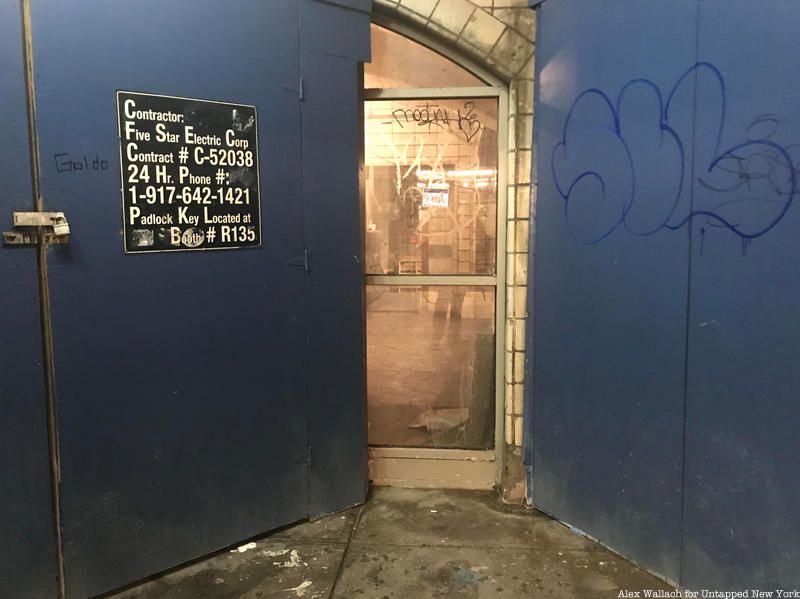
The hallway entrance has been blocked off since the 1980s and the tunnel is usually dark. For some reason, likely so that the MTA can use the tunnel for access during construction, lights have been installed and turned on to illuminate the hallway, revealing the arches and tile work which have been obscured to passersby. The top of the passageway features Guastavino vaulted ceilings, an architectural feature that was common in the original Penn Station designed by McKim, Mead and White. In the original station there were giant Guastavino arches in the glass filled main concourse. According to Maggie Redfern and John Ochsendorf, authors of A Guide to Guastavino in New York City, this is the last example of Guastavino tile work in the entire station. Our Chief Experience Office Justin Rivers, who checked out the tunnel after we got a tip that the lights were on, says the vaulted ceiling probably provides a similar acoustic effect as the whispering gallery in Grand Central Terminal.
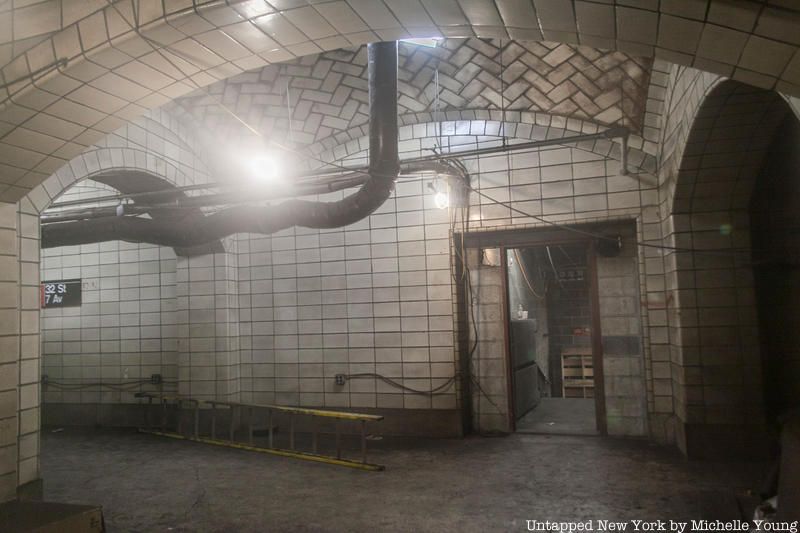
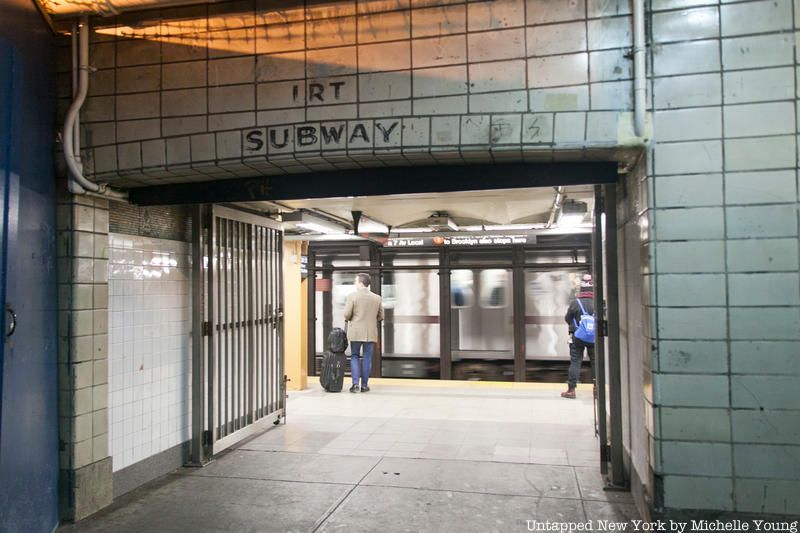
Turning around from this viewpoint into the Guastavino arches, you can see the former lettering that marked the entrance to the IRT platform, as well as the original handrails and guardrails from the station. Abrams, the Amtrak spokesperson, tells us “we are looking at options for potential restoration” for the tunnel and Guastavino arches.
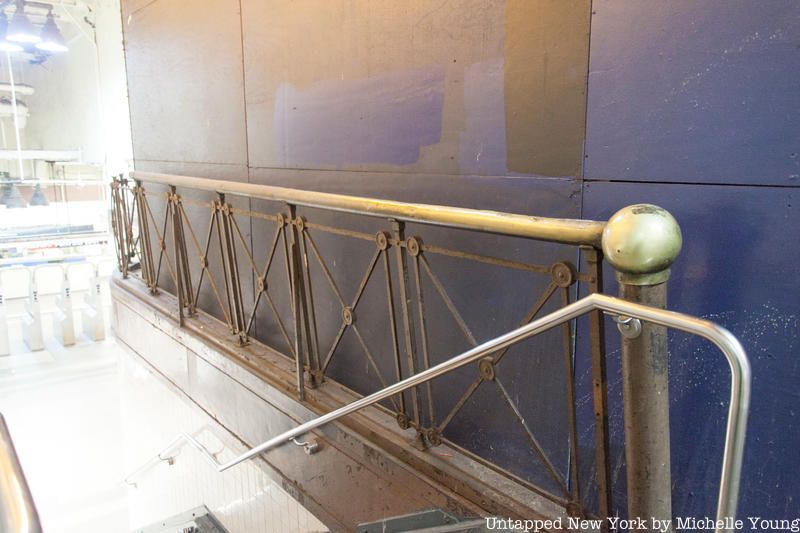
You can see a former entrance to this passageway from another part of the station. Through the door you can see towards the back of these photos, you may notice a bricked up wall. You can see the other side of that wall peeking out behind Andrew Leicester’s Day and Night terra-cotta relief sculpture. The sculpture if part of his Ghost Series which encompasses five different relief sculptures throughout the station which harken back to the architecture of the original McKim, Mead and White sculpture.
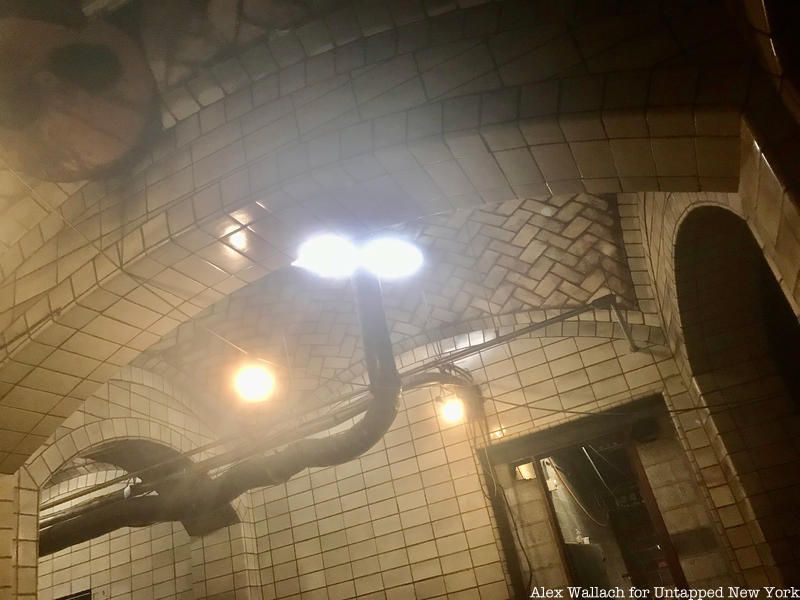
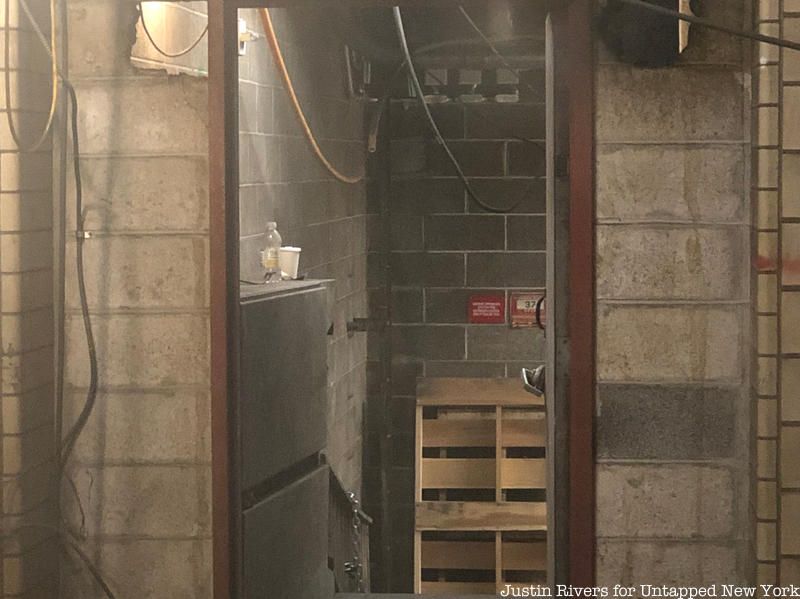

It is exciting to see the old pieces of Penn Station peeking through as new renovations are being made, and always fun to find a secret passageway. If you want to learn more about the ever-evolving station, and see more pieces of the original structure, join our Chief Experience Officer Justin Rivers for an upcoming Remnants of Penn Station walking tour!
Next, check out Renovation in Penn Station Reveals Elements from Demolished 1910 Station and Inside the Beautiful Gimbel’s Skybridge at Herald Square
Subscribe to our newsletter